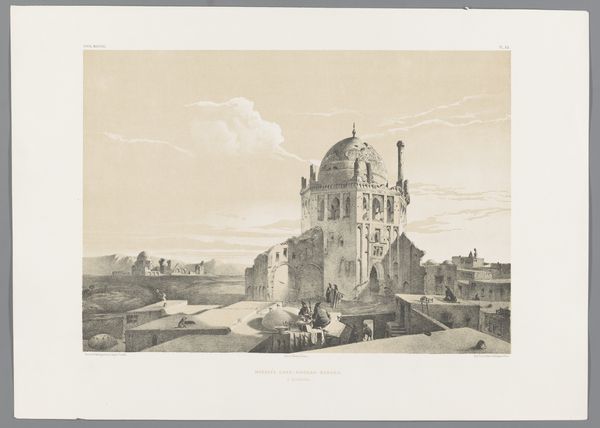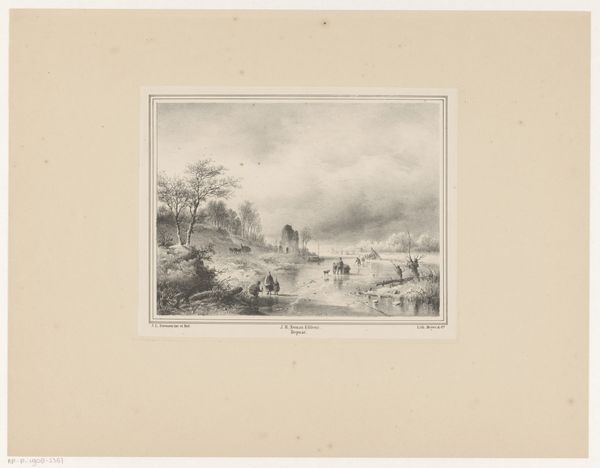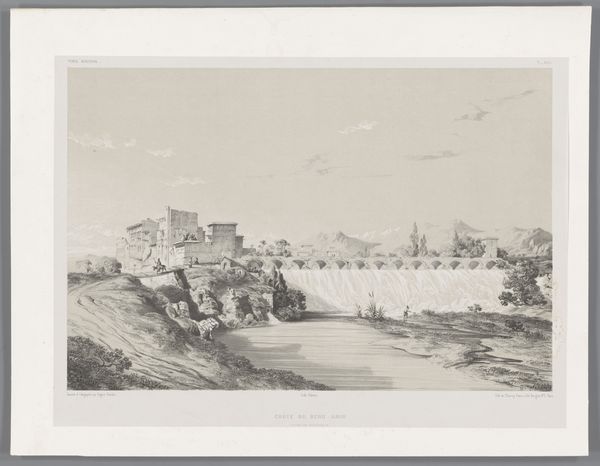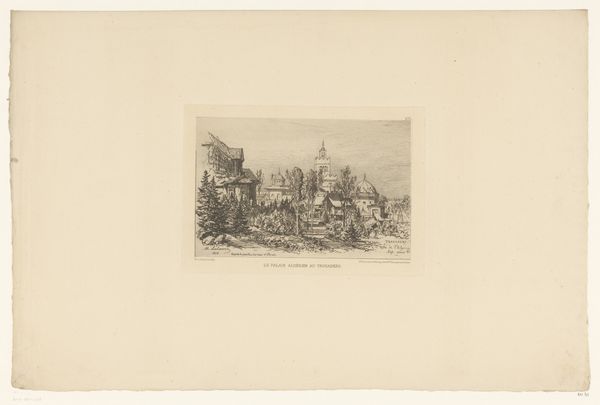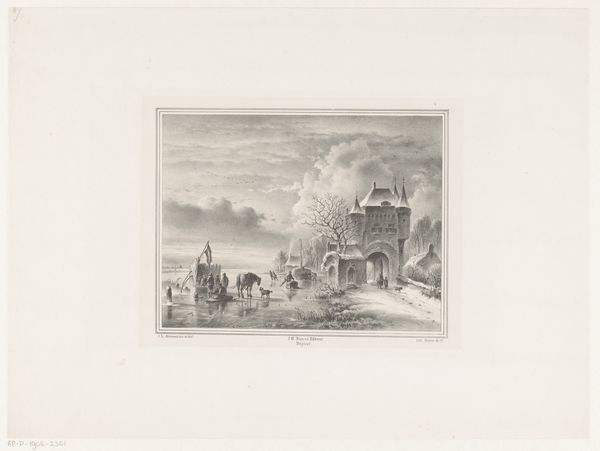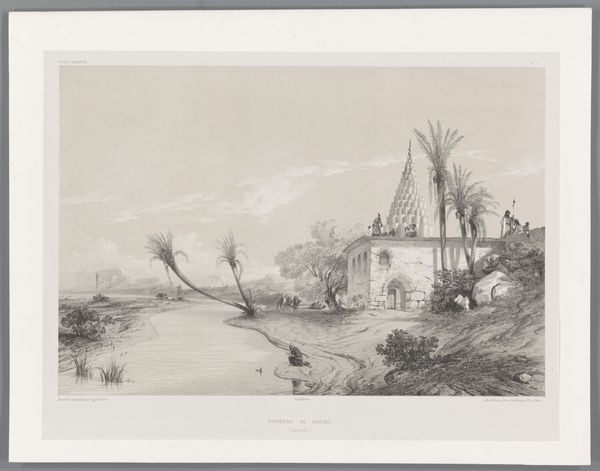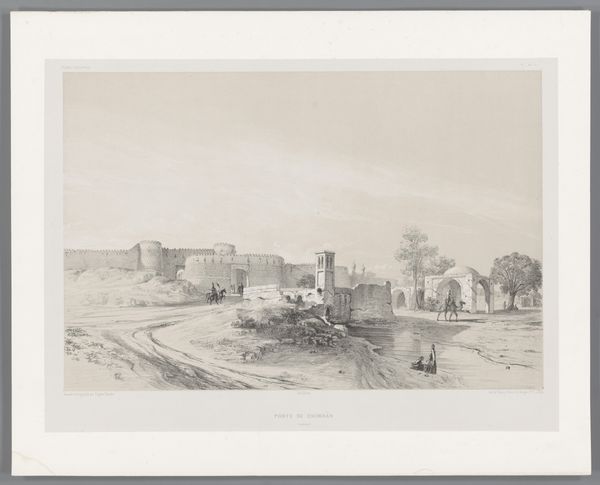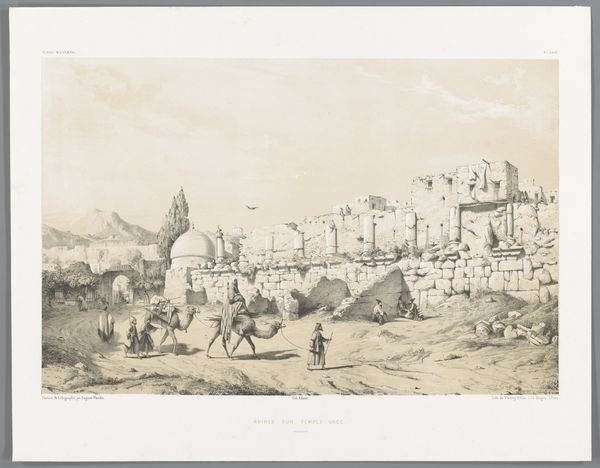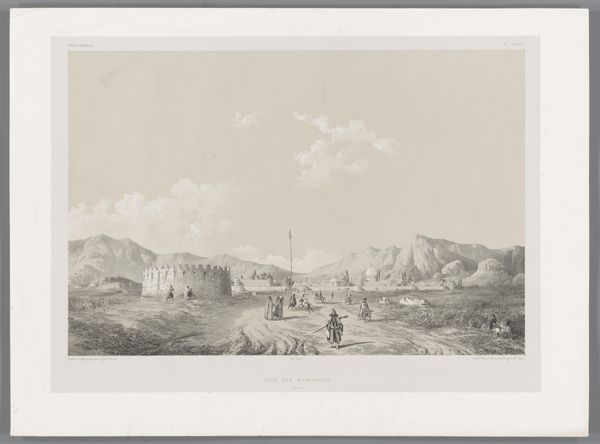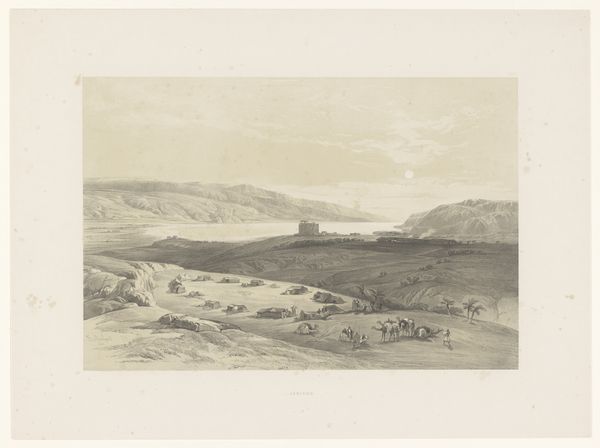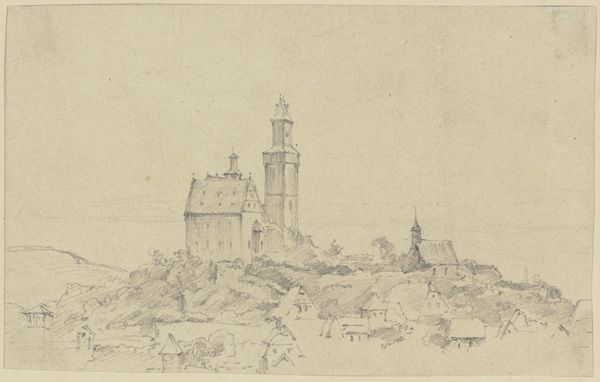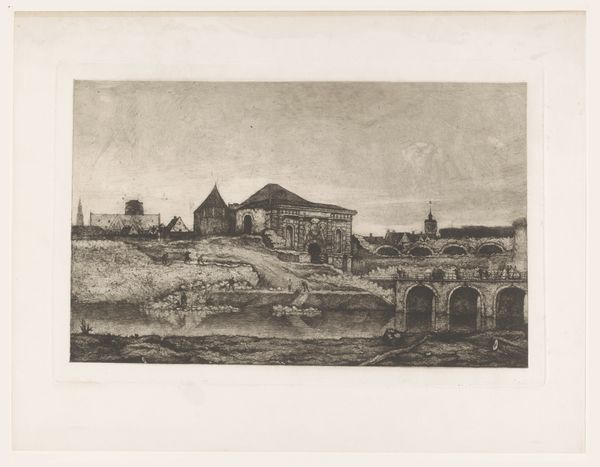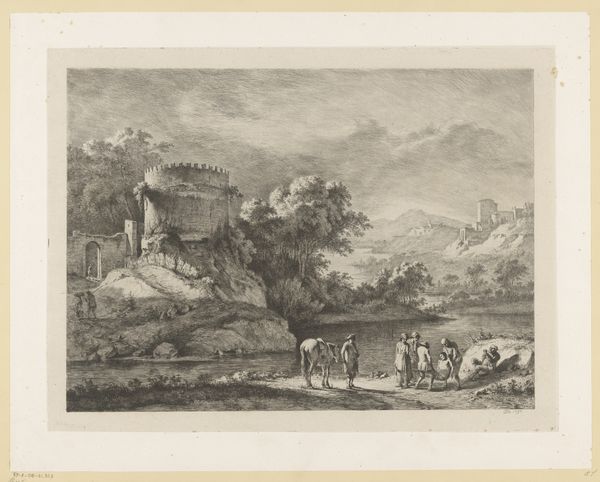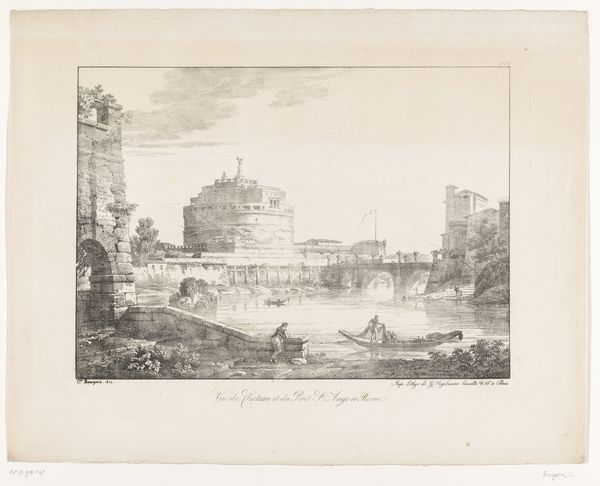
drawing, print, pencil
#
drawing
# print
#
pencil sketch
#
landscape
#
ancient-mediterranean
#
pencil
#
orientalism
#
islamic-art
Dimensions: height 446 mm, width 626 mm
Copyright: Rijks Museum: Open Domain
Curator: Eugène Flandin's "View of the Village of Soltaniyeh", dating from 1843-1854, really captures the stark beauty of the Persian landscape. It's currently housed here at the Rijksmuseum. Editor: There's something desolate and quite melancholic about it. The limited palette of greys only reinforces that impression for me. Curator: Absolutely. As an Orientalist piece, it offers a lens into how 19th-century Europeans perceived the East. Flandin meticulously documented the architecture and daily life, contributing to a growing body of work that shaped Western understanding, and often misunderstanding, of the region. Editor: The dome clearly dominates the scene. It's a statement of power, really – almost alien against the muted landscape. Is it a mosque, perhaps? What cultural and religious significance might it have held at the time, both for locals and in the artist's interpretation? Curator: Indeed, that structure anchors the village, physically and symbolically. Domes have long served as a signifier for sacred spaces, reflecting heaven itself. Flandin likely knew this, consciously imbuing the image with connotations of exoticism, otherness. Editor: But look at the figures, those traversing the foreground on camel and foot. They look less idealized, much more integrated into their surrounding terrain, like visual footnotes to that dominant architecture. It's almost as if they represent everyday people going about their routines underneath the weight of this great construction. Curator: Flandin's work reflects not only his individual artistry but also a broader historical context: the surge of European interest in the Middle East fueled by colonialism and academic curiosity. The sketch has great historic significance that serves as record keeping, whether or not one interprets his recording as neutral, unbiased, or something altogether more problematic. Editor: Which prompts me to reflect critically on the genre itself. Does the Orientalist movement open the doors for meaningful cross-cultural conversation, or is it simply a vehicle to reify dominant political narratives of Western culture? Curator: I think the real value lies in what we glean by interpreting and reflecting critically on the art today. There are many truths embedded in symbols that are far removed from our own reality today, ones we can decode and examine from different angles and perspectives. Editor: Precisely. By interrogating the images and the underlying power dynamics they represent, we come to a fuller, much more critical, view of art history, ourselves and where we have yet to travel.
Comments
No comments
Be the first to comment and join the conversation on the ultimate creative platform.
